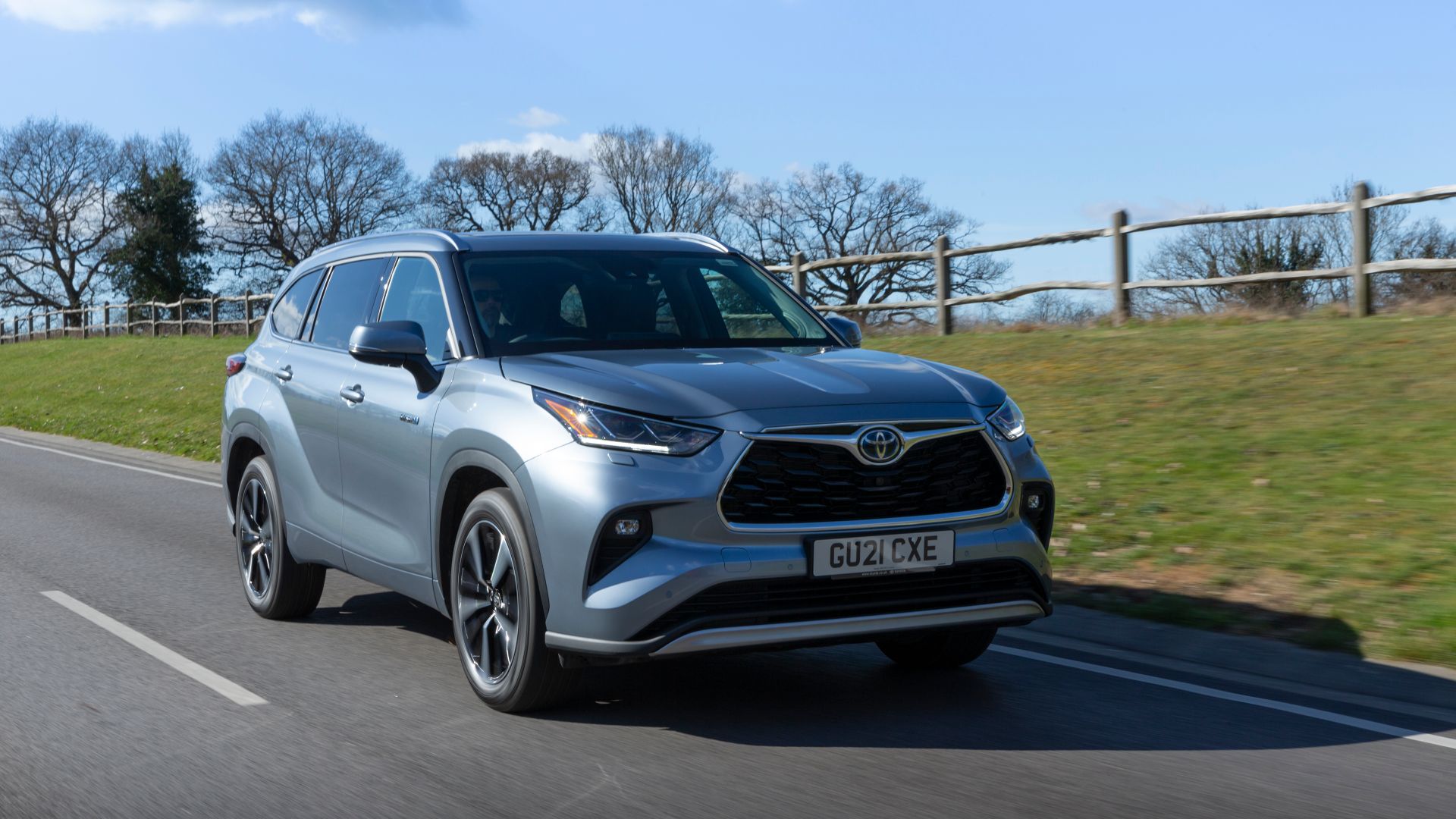
Australians like to say that if you go into the Outback, you need a Land Rover – but if you want to get out again, you need a Toyota Land Cruiser. I suspect the people of Africa, the Middle East and other parts of the world with challenging terrain have their own versions of the same joke.
The thing is, not everyone needs to clamber over rocks or ford raging rivers. For most of us, especially in the UK, the go-anywhere ability of the Land Cruiser feels like overkill. Like signing up Bear Grylls to run a health and safety course.
That’s where the new Highlander comes in. It’s a large E-segment SUV (think Lexus RX, Volkswagen Touareg or Volvo XC90) with seven seats, a hybrid drivetrain and plenty of premium equipment. In short, it’s better suited to Crawley than Kalgoorlie. Crawley it is, then.
Toyota’s flagship SUV
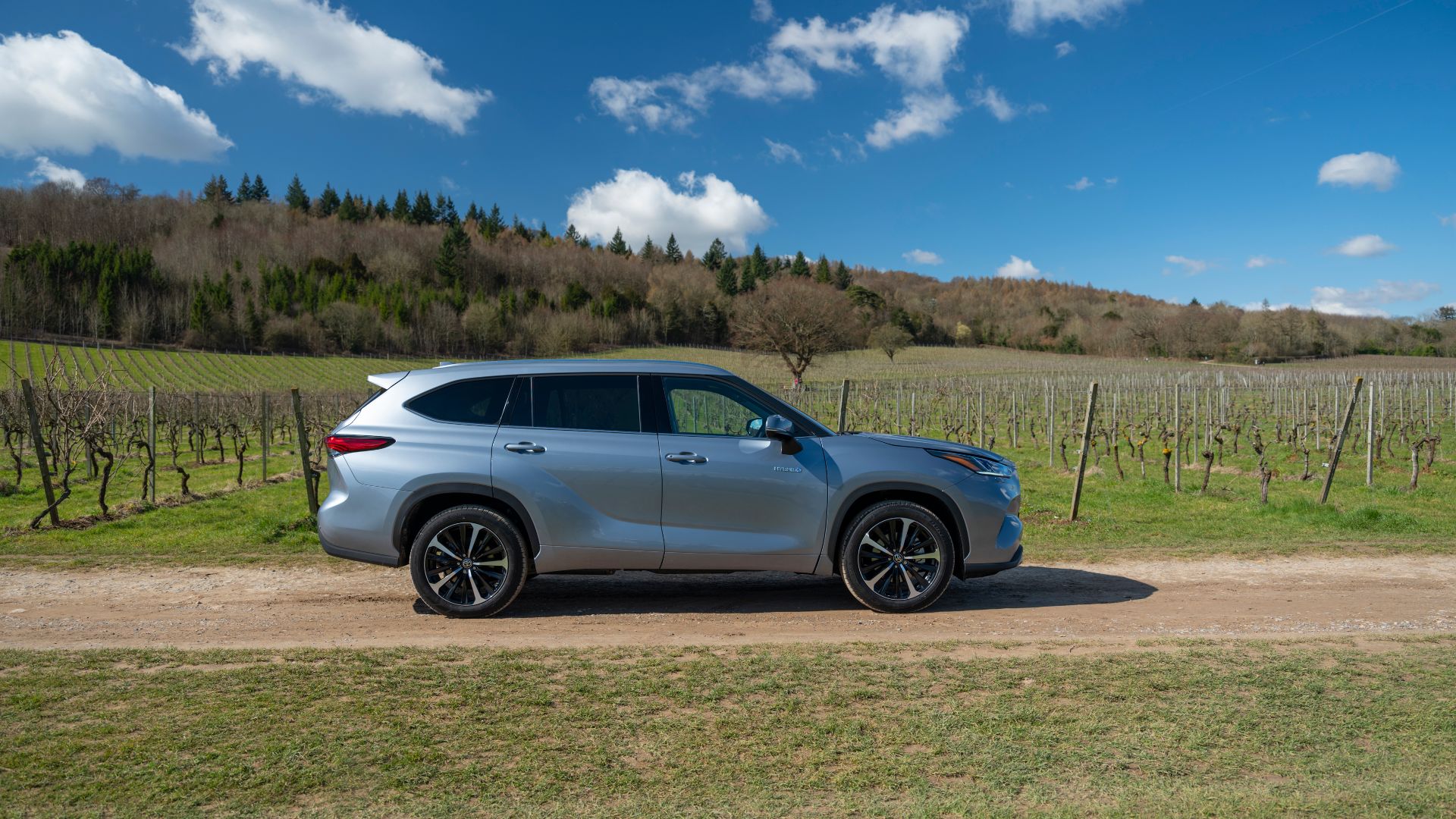
The Highlander name has been around since 2000, but this fourth-generation model is first to be sold in Western Europe. It heads up Toyota’s all-hybrid SUV range, sitting above the family-friendly RAV4, C-HR crossover and new supermini-sized Yaris Cross. The tiny Aygo will get some SUV steroids soon, too.
What the Highlander doesn’t do is replace the diesel-engined Land Cruiser, which remains on sale in passenger and ready-to-work Commercial guises. Just don’t call the toughest Toyota an SUV…
This distinction between a rugged 4×4 and a ‘Sports Utility Vehicle’ is an interesting one, particularly as, by Toyota’s own admission, there’s nothing sporty about the Highlander. But let’s not get ahead of ourselves – we haven’t even left Crawley yet.
Launch control
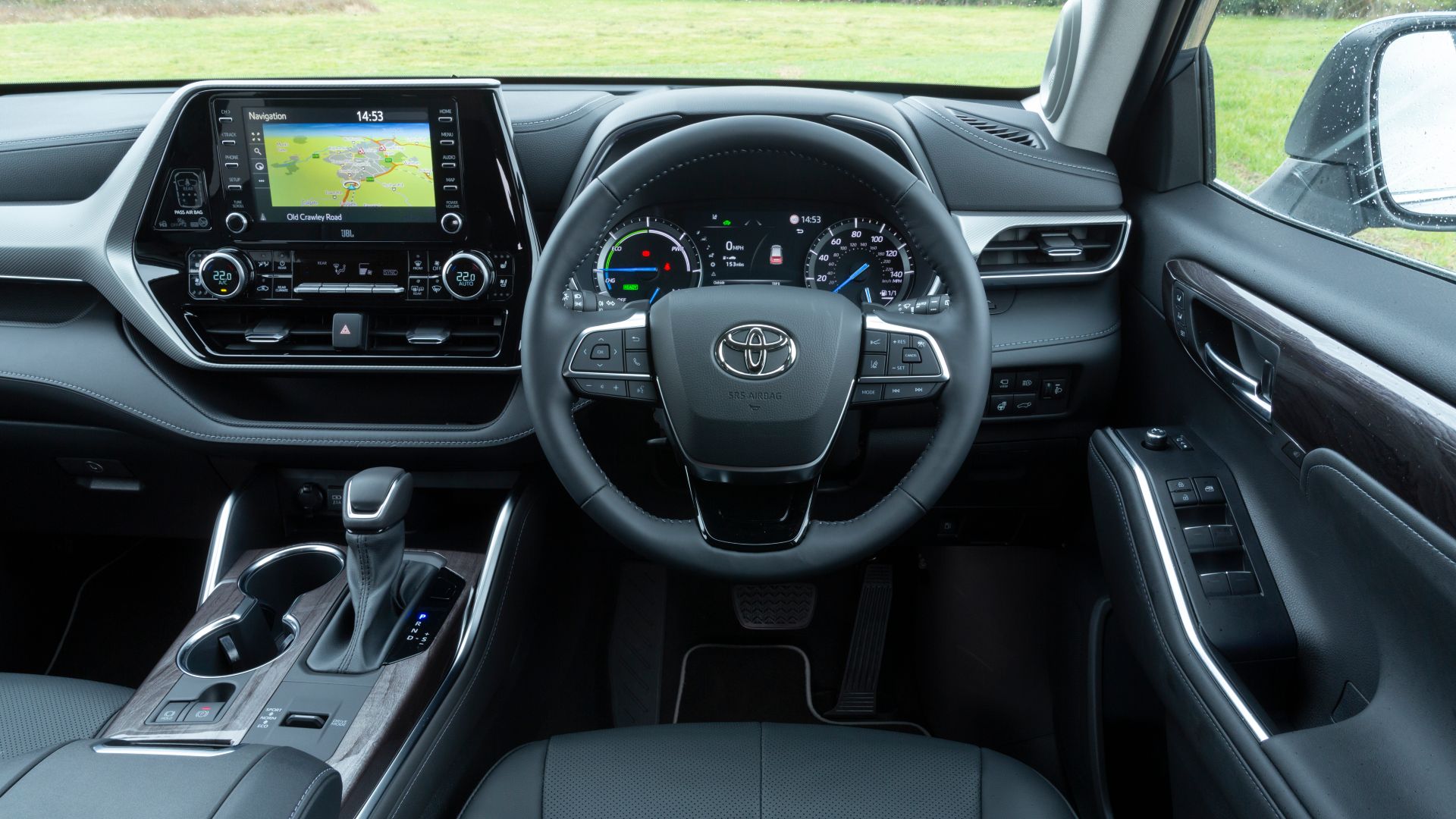
Toyota is one of the few manufacturers that has continued launching cars during this period of Covid inertia, but the format of events is necessarily quite basic. So, instead of a five-star hotel in Barcelona or Milan, I head for a quiet industrial estate, where self-serve coffee, a packed lunch, a Portaloo and a sanitised new car await.
The Highlander is quite handsome from the front, where it shows off Toyota’s imposing new trapezoidal front grille. The rear view is decidedly more generic. It uses a stretched version of the RAV4’s platform and looks, essentially, like a larger version of that car.
First impressions of the interior are equally mixed. Build quality is flawless, as you’d expect from a brand that regularly tops reliability surveys. But the 8.0-inch touchscreen is the same as you’d find in a Corolla, while the switchgear is blunderbussed across the steering wheel and dashboard. After the techno-cool of an Audi or Volvo, it all feels a bit five-years-ago.
Matching diesel for economy
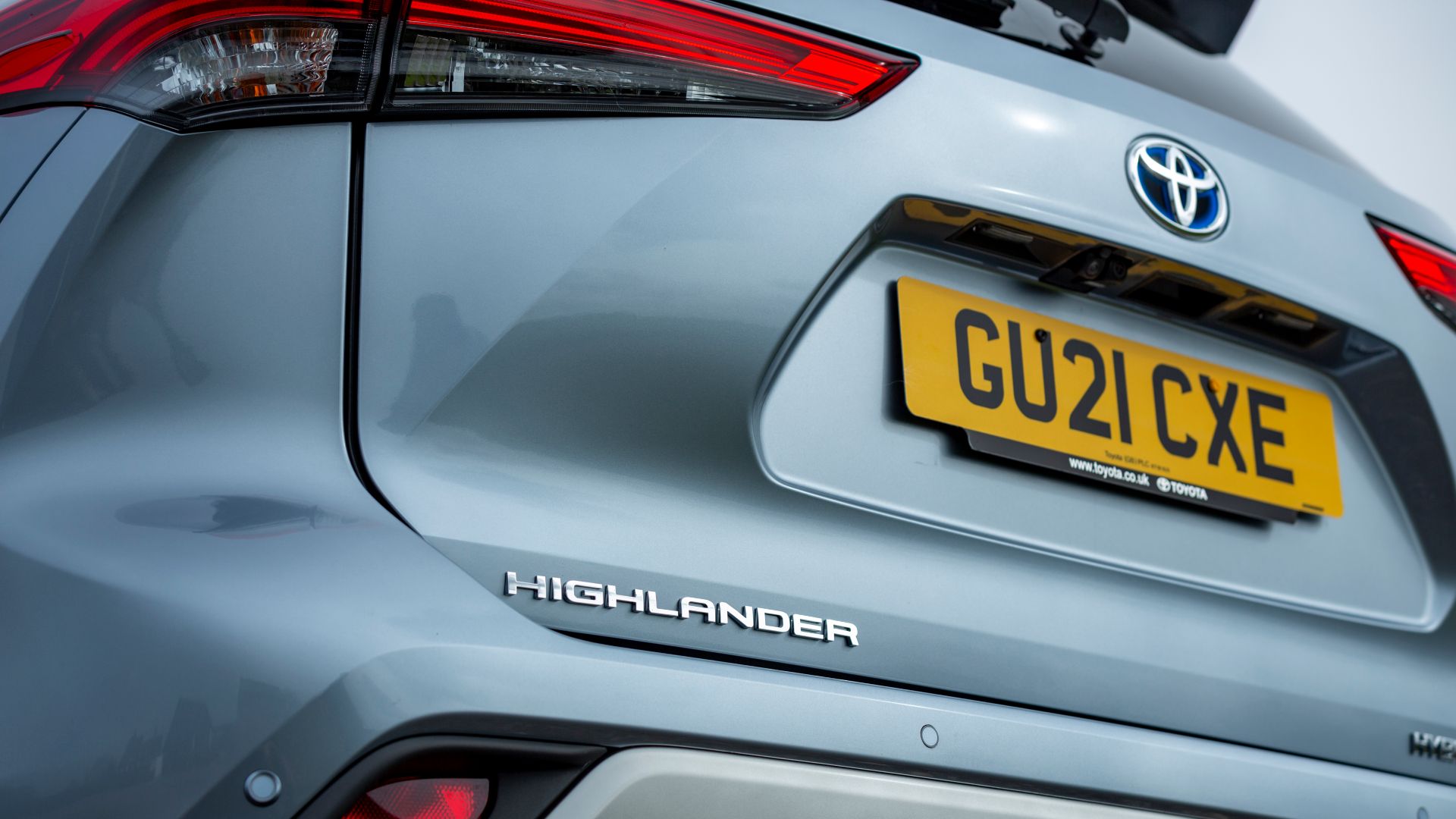
The Highlander is what Toyota calls a ‘self-charging hybrid’. Unlike the new RAV4 Plug-In, that means it can’t be recharged at home, although you can travel short distances in EV mode. The system consists of a 2.5-litre petrol engine and two electric motors, one driving each axle, with a total output of 248hp.
That makes it the most powerful Toyota full-hybrid ever – good for 0-62mph in a brisk 8.3 seconds. Perhaps more relevant, though, are the efficiency figures. Fuel economy of nearly 40mpg and CO2 emissions of 160-163g/km are similar to what you’d expect from a large diesel SUV.
In contrast the Germans and their War and Peace option lists, Toyota keeps it simple with two fully loaded trim levels. The £50,595 Excel is expected to take 80 percent of sales and comes with 20-inch alloy wheels, three-zone air conditioning, navigation, heated leather seats, keyless entry, a panoramic sunroof, LED headlamps, an electric tailgate and a JBL audio system.
My car was the £52,575 Excel Premium, which adds ventilated front seats, heated rear seats, a head-up display, and a 360-degree camera system, including a screen within the rear-view mirror. When you’re manoeuvring something that’s almost as long and wide as a Range Rover, it all helps.
Space for seven
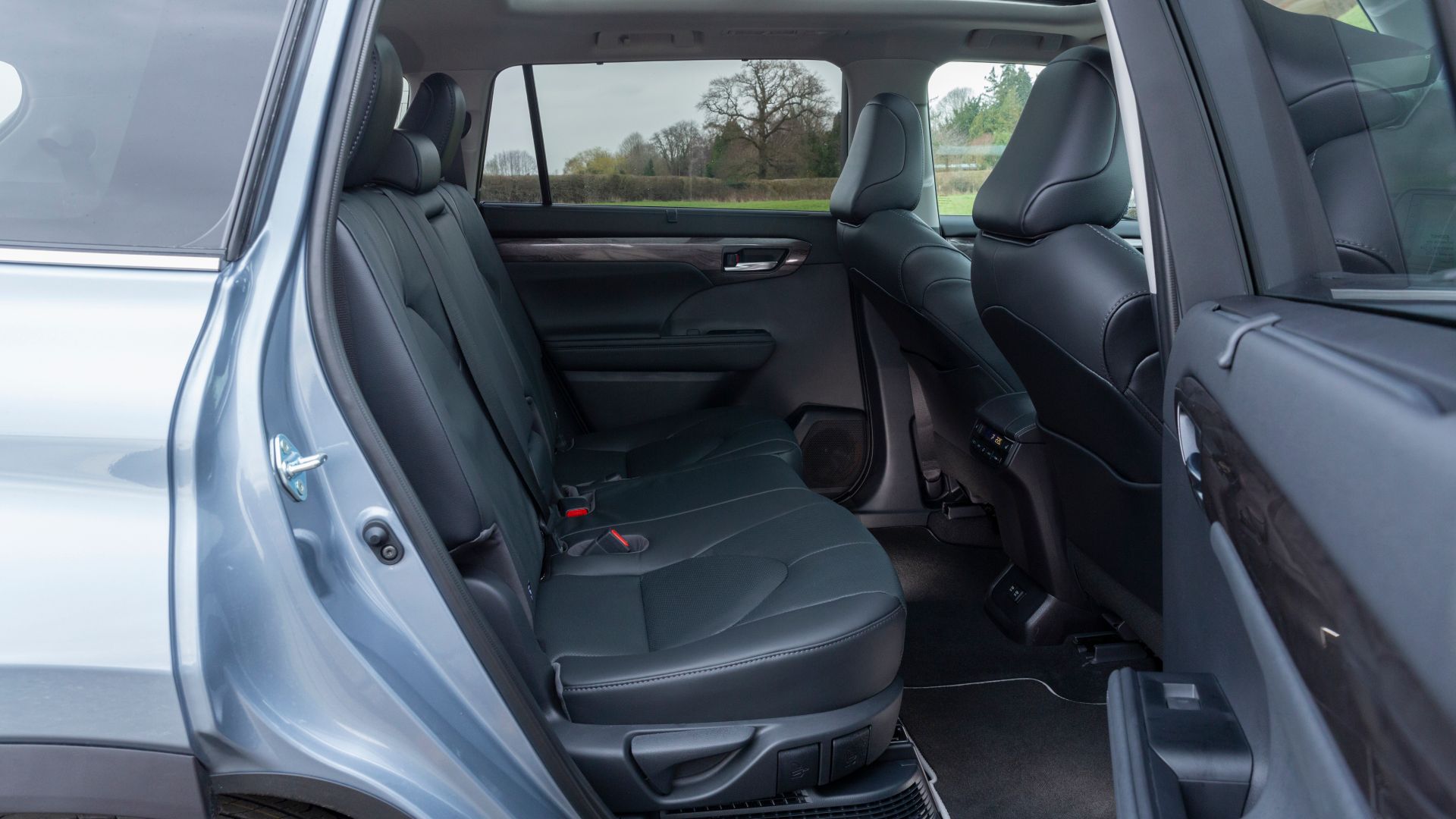
Thankfully, I exit the car park without incident and follow the sat-nav south towards the town of Horsham. In traffic, the Highlander is as quiet and straightforward to drive as any Toyota hybrid. Its steering is light, the electric motors deliver instant torque and the e-CVT automatic gearbox is unobtrusive. Your high vantage point and the car’s boxy shape make it easy to place on the road, too.
The ‘smart’ rear-view mirror, which displays a continuous camera feed, is slightly distracting at first, but you soon grow accustomed to it. It means you still have full rearward visibility when the boot is loaded to the roof – quite a likely scenario with all seven seats in use.
Driving the new, seven-seat Toyota Highlander today.
This is the fourth-generation Highlander since 2000 – and the first to be sold in Western Europe. pic.twitter.com/wmHzrdXNK6
— Tim Pitt (@timpitt100) March 22, 2021
Indeed, with seven seats occupied, the Highlander offers a modest 268 litres of luggage space: fewer than a Yaris hatchback. Switch to five-seat mode, however, and there’s a fulsome 658 litres: on par with a Skoda Superb Estate. And with just the front two seats upright, capacity swells to a wardrobe-devouring 1,909 litres up to the roof, with the added benefit of a completely flat floor.
Like nearly all seven-seaters, the Highlander’s third-row chairs are really for children. I folded my 5ft 8in frame back there in the interests of consumer research (you’re welcome), but the experience wasn’t pleasant.
On the plus side, the middle seats slide for easy access and are amply comfortable for adults. There’s plenty of useful stowage, too, such as smartphone holders in the armrests.
Four to the floor
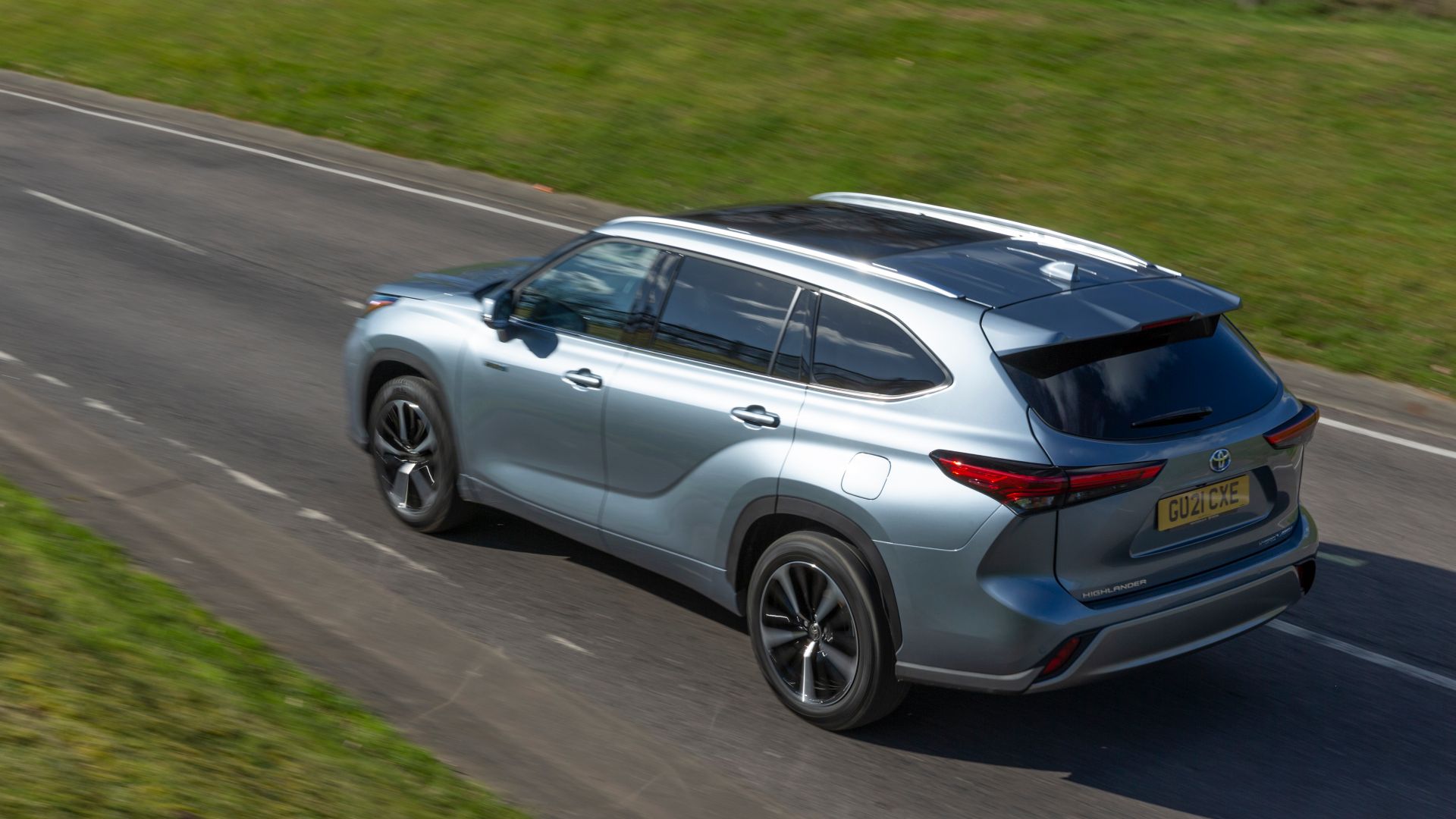
That’s the ‘Utility Vehicle’ bit covered. And we already know the Highlander doesn’t major on ‘Sports’ (“It wasn’t developed with the Nurburgring in mind,” says a Toyota insider). So how does it fare on the open road?
Better than a Land Cruiser, for starters. A wide stance and relatively low centre of gravity help mitigate a hefty 2,105kg kerb weight, while its steering and brakes feel progressive and reassuring. Push harder and there’s quite a bit of body-roll, but the payoff is a calm and impressively isolated ride. I tried the Sport mode for about five minutes, then thought better of it. The Highlander feels happiest when taking it easy – and so will you.
Steer clear of the Outback/Sahara/Dubai dunes (delete as appropriate) and the AWD-i all-wheel-drive system provides some all-weather back-up, too. Depending on the conditions, it can send up to 100 percent of torque to the front wheels, or 80 percent to the rears.
Unlike some hybrids, the Highlander is also a decent tow car, capable of pulling a 2,000kg braked trailer (easily enough for a large caravan).
There can be only one
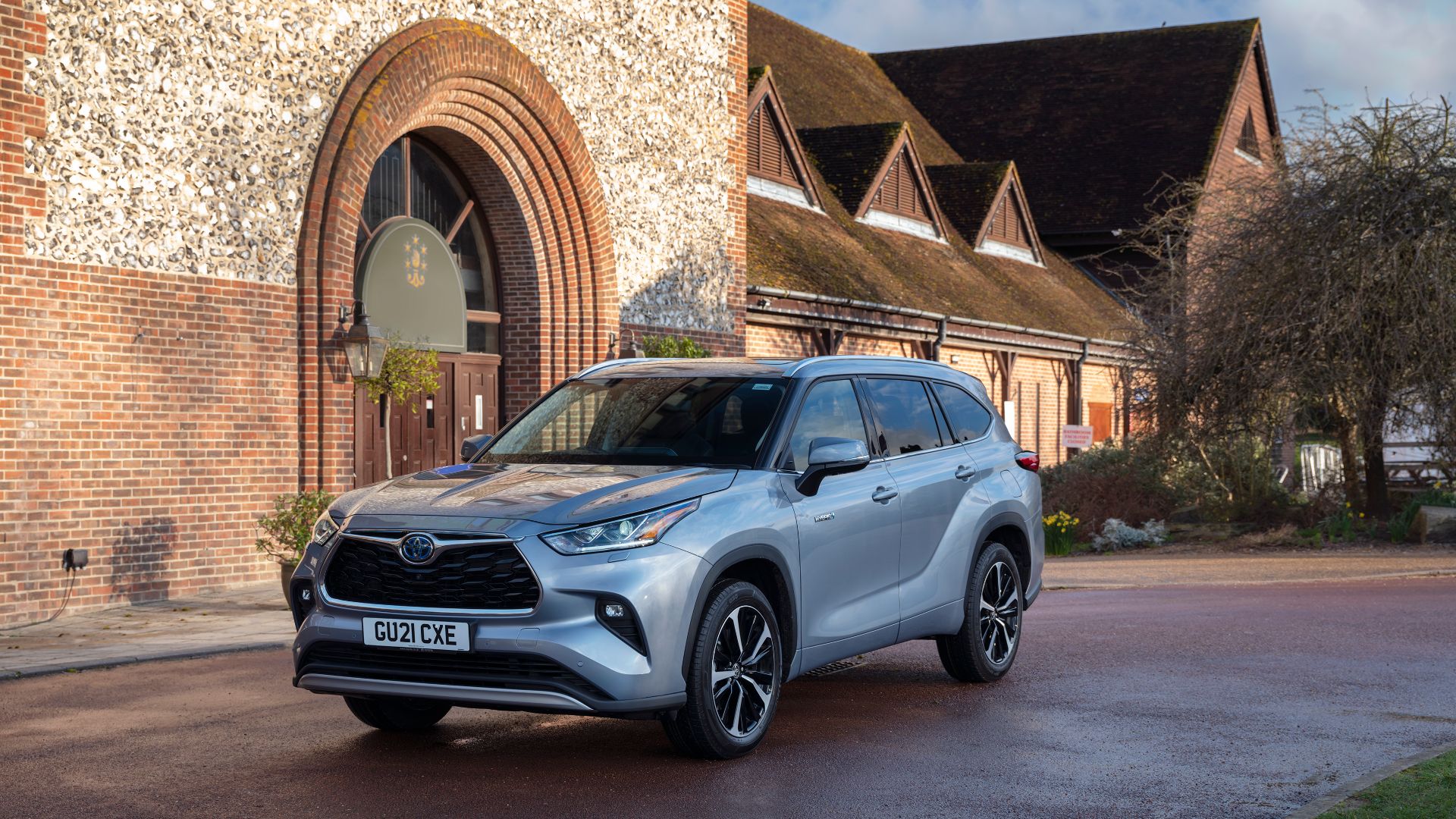
If you have £50,000 to spend on a Toyota SUV, you could go for the RAV4 Plug-In or the Highlander. The former uses less fuel – a faintly ludicrous 282.5mpg, according to the official figures – but only if you charge it up regularly. The latter is larger, more luxurious and more enjoyable to drive. Unless your company car manager insists otherwise, I’d go for the Highlander.
Bringing other brands into the equation, the Highlander still makes a strong case for itself. It matches rival diesel SUVs for efficiency, and trumps some of them for smoothness and refinement. Where it falls short is more subjective: design and image. However, it does undercut the likes of Audi, Mercedes-Benz, Lexus and Volvo on price, while offering more standard equipment.
Like that unstoppable Land Cruiser, you can bet it will be reliable too – backed up by Toyota’s impressive five-year warranty. If that stuff matters more to you than badge appeal, the Highlander is worth a look.
ALSO READ: